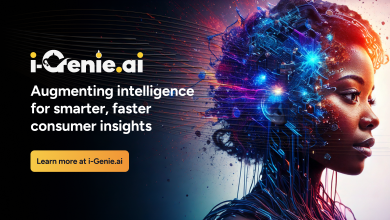
Sahaj Gandhi builds machine learning systems that need to work on the worst day, not just the average one. As Lead Machine Learning Engineer at Perspectus AI and formerly a founding engineer at Uno.AI, Sahaj has spent his career designing AI that operates in unpredictable environments, first in autonomous vehicles at Waymo and now in cybersecurity. His work focuses on multi-modal AI systems that analyze code, logs, and infrastructure data to catch vulnerabilities before attackers exploit them.
Sahaj’s path from imaging engineer to security specialist wasn’t a dramatic shift. At Waymo, he dealt with edge cases where rigid rules failed, such as low-light performance, sensor calibration issues, and rare events that standard systems couldn’t handle. Those same principles apply to security, where adversaries evolve faster than any fixed ruleset. In both domains, the challenge is building systems robust enough to handle what you haven’t seen before.
In this conversation with us, Gandhi explains why data quality matters more than model complexity, how multi-modal AI connects disparate information sources in security analysis, and why most AI security projects fail. He discusses the realities of early-stage startups, the gap between what investors think AI can do and what it delivers, and what’s still out of reach despite advances in large language models.
You’ve worked at the intersection of AI, computer vision, and cybersecurity throughout your career. How did you first become interested in applying machine learning to security challenges, and what made you pivot from autonomous vehicles to this space?
I actually got my start at Waymo, where I was deep in the world of AI, computer vision, and self-driving systems. Even there, we ran into a lot of scenarios that were right on the edge of security – basically, places where standard, rigid rules just didn’t cut it. We had to make sure our vision systems were robust in those tricky, unpredictable edge cases.
That experience taught me a lot about thinking in terms of safety margins and adaptability, and honestly, that mindset translates directly into security. In security, you’re dealing with adversaries who evolve faster than any fixed set of rules. That’s what pulled me into the infrastructure security space: it was the same kind of challenge, just with a different focus.
For me, the pivot made a lot of sense. I went from building “autonomous agents” for self-driving to building “smart agents” for security and threat detection. It’s the same kind of multi-modal thinking and statistical rigor, just applied to spotting threats and ensuring security. In other words, it felt like a natural evolution from one frontier to another.
Starting at Waymo as an Imaging Engineer building next-generation vision systems, what were the biggest technical challenges in developing computer vision for autonomous vehicles, and how has that experience shaped your approach to AI development?
One of the biggest computer vision challenges in the autonomous vehicle space was definitely dealing with signal quality at scale. When you’re building next-gen vision systems, you end up obsessing over things like sensor calibration, low-light performance, HDR imaging, and fixing rolling shutter artifacts. Plus, you’re always accounting for those long-tail, rare edge cases – basically the weird, unknown events that can happen out in the real world.
What that taught me is to design machine learning systems not just for the average day, but for the worst day. It made me really focus on data quality, on careful calibration, on monitoring, and on mapping out all the failure modes. In other words, I learned to favor interpretability and robustness over just leaderboard accuracy. And that whole experience definitely shaped how I think about AI development now.
You joined Uno.AI as a founding engineer and helped grow the company from an idea to a team of 10-15 people. What are the unique challenges of building AI/ML systems in an early-stage startup environment, and what did you learn about scaling both technology and teams in that founding role?
The first big challenge in an early-stage startup is what I’d call the 0 🡪 1 reality. Requirements are super fluid, and you’re not just building models – you’re building the whole pipeline from scratch. That means you’re setting up the first data contracts, your CI/CD for models, and often you’re doing all of the while still figuring out if the product even has a market fit.
The second challenge is that data comes before models. The real bottleneck is always having high-quality, representative, and privacy-safe data. So, we had to build these feedback loops early on to turn customer interactions into good training data and lock down privacy controls from day one.
And the third piece is scaling both the tech and the team in parallel. We standardized things like feature stores, schema registries, and lightweight MLOps stacks early to keep complexity down. We also hired T-shaped engineers who could handle an entire vertical slice, from data to model to serving. That way, we kept things moving quickly without everything turning into chaos.
You have worked as a Founding and Lead Machine Learning Engineer at companies like Uno AI and Perspectus AI, trying to secure systems using multi-modal AI. For those unfamiliar with the field, can you explain what makes multi-modal AI particularly powerful for cybersecurity applications, and why security is such a critical consideration in this space?
In cybersecurity, you’re often dealing with a mix of different data types: code, logs, screenshots, architectural diagrams, and so on. Multi-modal AI is powerful because it can connect the dots across all these different formats. Instead of just looking at one piece of data in isolation, it can combine clues from multiple sources to get a fuller picture of what’s going on.
And because of that, we have to think about security from the start. The more data types we pull together, the more careful we have to be about things like keeping data isolated where needed and making sure we have the right safeguards in place. In short, it’s all about combining different kinds of information while making sure we keep everything secure and well-guarded.
Your work focuses on areas like smart contract vulnerability detection. Why do traditional security tools fall short in analyzing code for vulnerabilities, and how does machine learning change what’s possible in detecting threats before they’re exploited?
Traditional static analyzers are fantastic when you’re looking for known patterns – they catch a lot of the obvious issues. But they can get brittle if you run into a new kind of exploit or something they haven’t seen before. They also tend to produce a lot of false positives, which can overwhelm analysts.
Machine learning helps because it can adapt and look at a broader context, not just the known patterns. It can help rank which issues are likely real problems and which ones might not be. In other words, it’s about blending those traditional tools with ML to get a more flexible and adaptive approach.
You’ve been part of teams that have successfully raised funding for AI security startups. From a technical leader’s perspective, what do investors most misunderstand about AI/ML security products, and how do you communicate the real capabilities versus the hype?
A common misconception is that investors sometimes think you can just add another large language model and everything’s solved, or that having data is easy and accuracy alone is all that matters. In reality, in security, it’s about more than just accuracy. It’s about how quickly you can detect threats, how you manage operator workload, and how adaptable you are to new attack methods.
I usually explain this by focusing on a realistic threat model and a solid deployment plan that includes privacy, cost, and how we handle failures. Basically, I make sure they understand that we separate the flashy “magic” from the real guarantees we can actually support with strong SLAs.
Looking at the broader landscape of AI in cybersecurity, what are the biggest misconceptions that companies have when they try to apply machine learning to security problems? Where do most AI security projects fail?
One big misconception is treating security like a simple classification task and ignoring that attackers adapt. Companies often skip a solid data strategy and end up with models that analysts can’t really use because they don’t provide clear explanations. And finally, thinking an LLM is a fully autonomous analyst is a mistake – it’s more of a helper that still needs guidelines.
You made the leap from Waymo to founding-stage startups like Uno.AI and now Perspectus AI. What advice would you give to other ML engineers considering making that jump from established tech companies to early-stage startups, especially in terms of the technical and career trade-offs?
My advice is to expect a lot of ambiguity and to embrace it. You’ll be building things end-to-end, which is the big upside. Choose simple tools you can swap out quickly rather than locking yourself into a huge platform. Vendor sprawl will just slow you down.
Also, define success early. A simple evaluation with a handful of real scenarios is way more valuable than a huge list of features. And in terms of career trade-offs, you’re trading depth in one specialized area for breadth across a lot of areas. The risk is higher, but the learning, ownership, and impact are huge. Basically, join for the mission and the team, not just the market buzz.
Code analysis and vulnerability detection using AI is rapidly evolving, especially with recent advances in large language models. Where do you see this technology heading in the next 2-3 years, and what capabilities are we still far from achieving despite these breakthroughs?
In the next couple of years, we’ll probably see automated pipelines that can quickly spin up sandbox tests to validate vulnerabilities on their own. We’ll have stronger hybrid systems that combine the best of machine learning and formal reasoning, so you can get better exploitability scoring and more natural language explanations of what’s going on in the code.
What’s still far off? Well, we’re not quite at the point where models can handle really long, complex reasoning over huge codebases without a lot of extra tooling. And truly perfect, end-to-end formal guarantees for really complex systems are still a bit out of reach. But we’re definitely heading toward more automation and smarter reasoning.
Given your experience across computer vision, autonomous systems, and cybersecurity, how do you think about the responsible development of AI systems? What practices or principles do you believe are essential when building AI for security-critical applications?
When it comes to building AI for security-critical applications, the first thing is to think about your threat model right from the start. Treat your model not just as a defender but as something that could be attacked. Keep data governance in mind: minimize personal info, track where your training data comes from, and have clear evaluations.
Use defense-in-depth strategies like sandboxing and rate limits, and do adversarial testing to find weaknesses before others do. Aim for measurable guarantees – set clear SLAs and keep humans in the loop for critical decisions. And finally, always do ethics and safety reviews so you understand how the system might be misused and can document best practices to reduce risks.
For early-career engineers interested in AI/ML security, what technical foundations and practical experience would you recommend they build? What skills or knowledge areas are most underrated in this field?
For early-career engineers interested in AI security, I’d suggest focusing on a few core foundations. Get comfortable with probability, optimization, and understanding how large language models work. It’s also really helpful to know a bit about systems – like basic networking, cloud tools, and operating systems. On the security side, you’ll want a grounding in things like threat modeling, static and dynamic analysis, and fuzzing. And if you’re working with code, it’s helpful to understand abstract syntax trees or basic compiler concepts.
Practically, the best way to learn is by doing. Build small projects where you ingest data, detect issues, and explain your results. Maybe contribute to open-source projects or try recreating vulnerability detectors in a safe environment. And don’t overlook things like how to curate good test sets and measure how much time you’re saving. One underrated area is how you present results – making your findings easy for users to understand can be just as important as the technical work.




